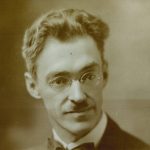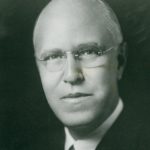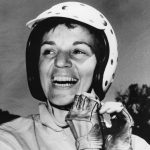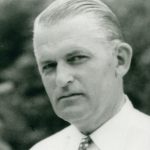It is difficult to categorize William Stout. He was an aeronautical engineer, aerodynamicist, author, automobile designer, editor, engineer, inventor, poet and publisher. He invented the sliding car seat, built the first car with an active pneumatic suspension, served as the Automobile and Aviation editor for the Chicago Tribune and had a book of his poetry published.
When it came to airplanes, he is best known for the Stout 3-AT, which became the Ford Tri-Motor. He launched Stout Air Services in 1923, the first regularly scheduled airline in America. His Sky Car prototype, created in 1931, is enshrined in the Smithsonian Institute.
Stout grew up in St. Paul, Minnesota, graduating from Mechanic Arts High school then attending Hamline University and the University of Minnesota. Becoming a school teacher, Stout’s interest in the way things work was his consuming interest. He found his outlet by writing “how-to” articles for youngsters, providing plans and instructions to build toys and crafts from discards found around the house. Originally published in the Minneapolis Times, the series was soon nationally syndicated.
When it came to automobiles, Stout started small. During a trip to Europe in 1908, his inventive mind was intrigued by the English Zenith hybrid vehicle. Part motorcycle-part car, it appealed to his belief in design simplicity and light weight. His own hybrid, the Bicar, never made it to production but it did lead to a job with Motor Age magazine, as cyclecar editor.
A 1914 presentation to the Society of Automobile Engineers titled ‘The Possibilities of the Cyclecar’ provided his introduction to Scripps-Booth Motor Company of Detroit who were about to introduce their own cyclecar. Stout joined as chief engineer and ad manager only to be recruited by Packard’s president, Alvan Macauley. There he became Chief Engineer of Packard’s aviation division, eventually leaving to create the Stout Engineering Company.
It was here he developed the airplanes that changed the world. Totally enclosed, all-metal monoplanes designed with careful attention to aerodynamics, they ushered in a new era. It is also where a revolutionary, rear-engine automobile took shape, The Stout Scarab.
The Scarab, with its luggage and spare tire carried in a compartment in front and the engine in the rear got its name from an Egyptian beetle with a similar shape. Its aluminum skin, riveted to an aluminum space frame, borrowed heavily from aircraft design, strong yet light weight. Few were built, but they were prophetic.
His next major project was collaboration with Owen-Corning. Called Project Y, this one-off vehicle boasted features like push-button electric doors, a frameless fiberglass body and a pneumatic, active suspension system that kept the car from leaning in a turn by adjusting the pressure with compressed air.
William Stout passed away in 1956. We can presume he was inventing something at the time.





